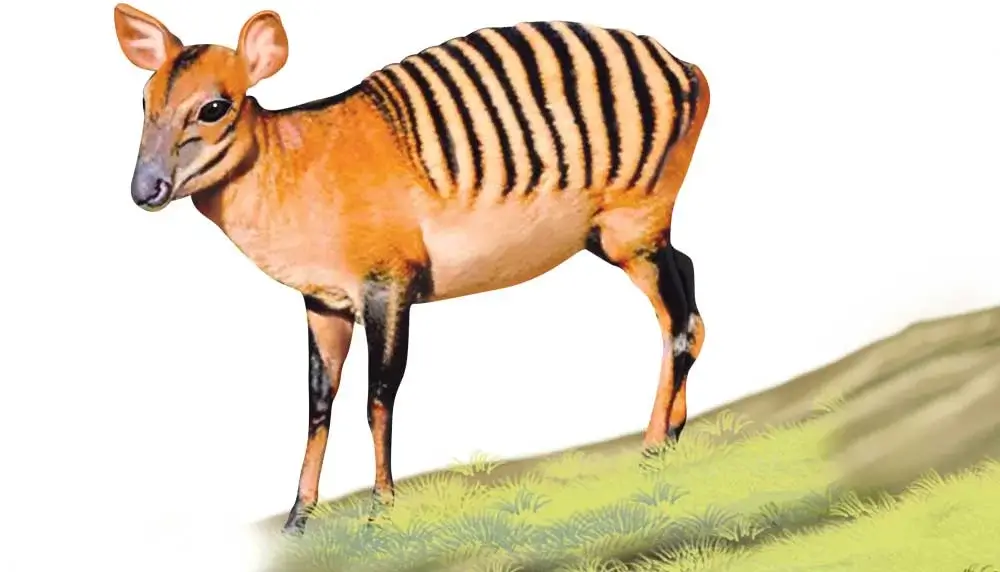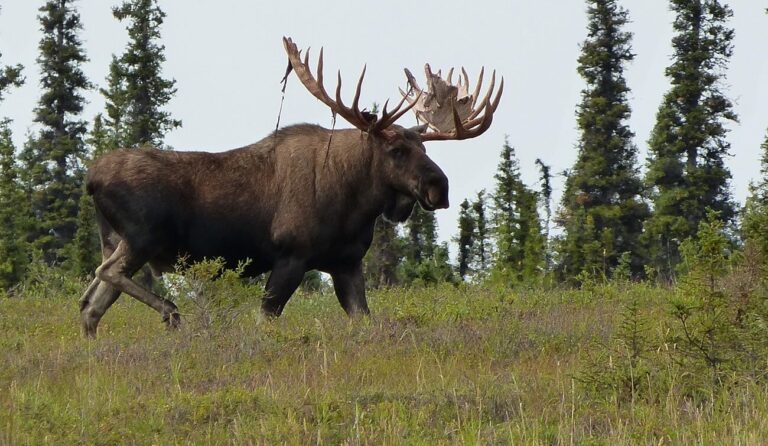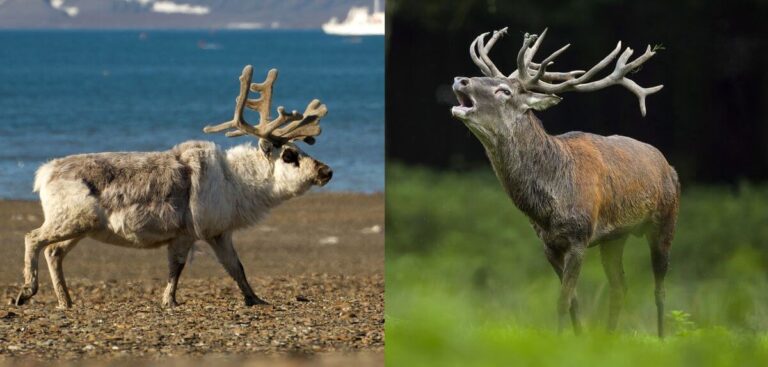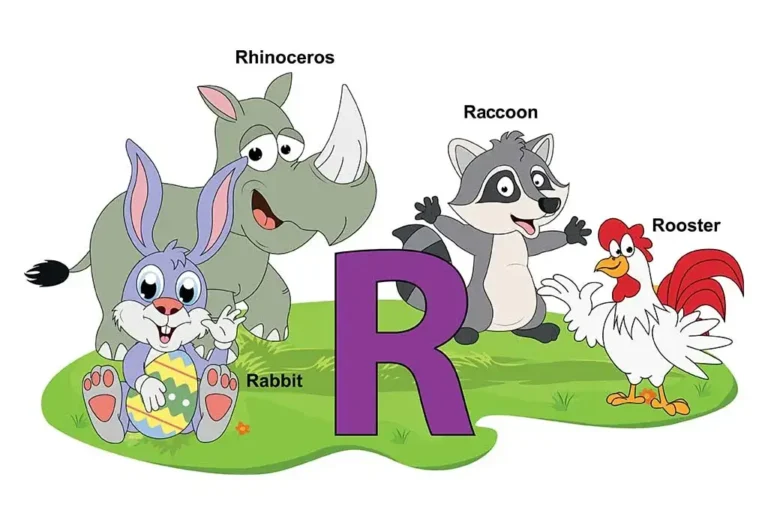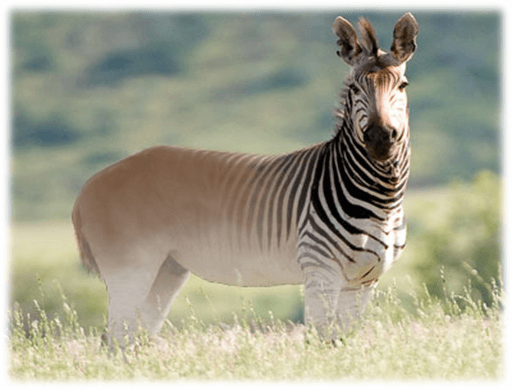Zebra Duiker: Habitat, Behavior, and Conservation
The Zebra Duiker (Cephalophus zebra), an enchanting little antelope, is known for its unique appearance and fascinating behaviors. Found primarily in the dense forests of Central and West Africa, these creatures are an integral part of their ecosystem and a subject of intrigue for wildlife enthusiasts.
This article will delve into the scientific classification, physical characteristics, habitat, behavior, diet, reproduction, predators, conservation status, and much more about this remarkable species.
Contents
Scientific Classification
- Kingdom: Animalia
- Phylum: Chordata
- Class: Mammalia
- Order: Artiodactyla
- Family: Bovidae
- Subfamily: Antilopinae
- Genus: Cephalophus
- Species: Cephalophus zebra
Physical Characteristics

The Zebra Duiker is a small antelope, measuring about 60-100 cm (24-39 inches) in length and weighing 25-50 kg (55-110 lbs). Its most distinctive feature is its striking black-and-white striped coat, which helps it blend into its forested environment. The stripes are more pronounced in males than in females.
- Coloration: The body is generally reddish-brown, with white stripes running vertically along the body.
- Horns: Only males possess horns, which can grow up to 15 cm (6 inches) long.
- Size: Males are typically larger than females, showcasing sexual dimorphism.
Habitat
Zebra Duikers inhabit the dense, moist forests of Central and West Africa, favoring areas with thick underbrush. They are often found in regions with abundant vegetation, providing shelter and food. Their range includes Cameroon, Gabon, and the Democratic Republic of the Congo.
Behavior
Zebra Duikers are primarily solitary or found in small groups, usually consisting of a female and her offspring. They are crepuscular, meaning they are most active during dawn and dusk.
- Territoriality: Males establish territories they mark with scent to ward off rivals.
- Vocalization: They communicate through sounds, including snorts and grunts, especially when alarmed.
Diet
Zebra Duikers are herbivores, feeding on leaves, fruits, and flowers on the forest floor. Their diet can be quite diverse, and they are known to consume a variety of plant species, making them an important seed disperser in their habitat.
- Digestive System: They have a ruminant-like digestive system, allowing them to extract nutrients efficiently from fibrous plant material.
Reproduction
Mating season for the Zebra Duiker typically occurs during the rainy season, though they can breed throughout the year. After a gestation period of about 7-8 months, females usually give birth to a single calf.
- Care of Young: The mother is highly protective, often hiding her calf in dense underbrush while she forages.
Predators
Zebra Duikers face threats from various predators, including:
- Large Cats: Leopards and other large carnivores pose a significant threat.
- Snakes and Birds of Prey: Young or smaller individuals are particularly vulnerable.
Conservation Status
The Zebra Duiker is classified as Near Threatened by the International Union for Conservation of Nature (IUCN) due to habitat loss and poaching. Deforestation for agriculture and logging has significantly reduced their natural habitat, while hunting poses additional risks.
Conservation Efforts
Efforts to protect the Zebra Duiker include habitat preservation and establishing protected areas. Local conservation initiatives aim to raise awareness about the importance of this unique species and its role in the ecosystem.
Interesting Facts
- Zebra Duikers are named for their unique striped coat, which resembles that of a zebra.
- They are known for their agility and can easily leap over obstacles in their environment.
- Unlike many other antelope species, Zebra Duikers have adapted to living in densely wooded areas.
Evolutionary History
The Zebra Duiker belongs to the subfamily Antilopinae, which includes various species of antelopes. They are believed to have evolved adaptations that allow them to thrive in forested habitats, distinguishing them from other duiker species that occupy different ecological niches.
Relationship with Humans
While Zebra Duikers are not commonly kept as livestock, they hold cultural significance in some regions, often appearing in local folklore. Unfortunately, their populations are threatened by human activities such as habitat destruction and poaching for bushmeat.
FAQs
What eats a zebra duiker?
Zebra Duikers are preyed upon by large carnivores such as leopards and various birds of prey, particularly when they are young.
What are some interesting facts about zebra duikers?
Zebra Duikers are solitary creatures that communicate using a variety of vocalizations. Their striking striped coats provide excellent camouflage in their forest habitat.
What is the behavior of a zebra duiker?
Zebra Duikers are primarily crepuscular and exhibit territorial behavior, especially males marking their territory with scent.
Is a zebra duiker an omnivore?
No, Zebra Duikers are herbivores feeding on leaves, fruits, and flowers.
Conclusion
The Zebra Duiker is a captivating species that plays a vital role in its ecosystem. Despite facing numerous threats, conservation efforts are underway to ensure their survival. Understanding and appreciating this unique animal can contribute to broader conservation initiatives, emphasizing the importance of preserving the Zebra Duiker and the rich biodiversity of their forest habitats. By raising awareness and supporting conservation efforts, we can help secure a future for this remarkable species and the ecosystems they inhabit.
- Golden Retriever Pros and Cons: What Every Pet Parent Should Know - 15 September 2025
- Cane Corso Dog Breed: Health, Care, and Lifespan - 14 September 2025
- Catahoula Leopard Dogs: Description, Temperament, Lifespan, & Facts - 21 July 2025

